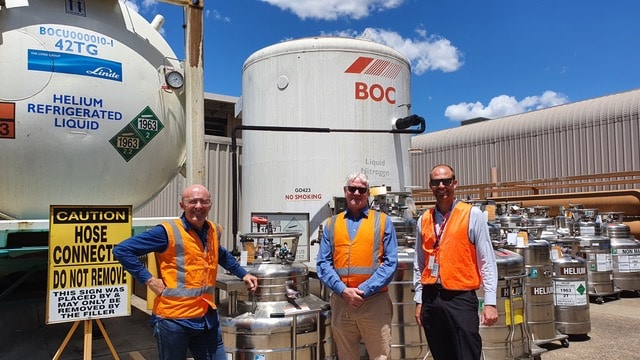An aerospace firm based in Queensland (QLD) called Hypersonix Launch Systems (Hypersonix) has announced plans to use locally produced BOC green hydrogen as it looks to shoot the Sunshine State into the space race.
Hyersonix plans to use the green energy fuel produced via solar electrolysis in its Spartan scramjet engines, rocket engines used to blast small satellites carrying payloads into lower earth orbit (LEO).
This is certainly not the first hydrogen fuelled rocket, nor is it the only hydrogen fuelled rocket in the news this month, after Aerojet Rocketdyne (Aerojet) completed its final acceptance test for the RS-88A, described by Aerojet as the world’s most powerful hydrogen-fuelled rocket engine. The rocket passed the final test before it can be used on the United Launch Alliance (ULA) Delta IV Heavy launch vehicle on the B-1 Test Stand at NASA’s Stennis Space Centre in Mississippi.
Nevertheless, Hypersonix CEO and co-founder David Waterhouse said he was pleased that both Hypersonix and BOC “share a desire to bring the principles of Green Space to the small satellite launch market, and this is something that sets us apart. We are determined to go to space, but in a way that is sustainable for our planet by design.”
Hypersonix has already secured an Accelerating Commercialisation Grant from the Department of Industry, Science, Energy and Resources, with which it plans to design and construct a re-usable satellite launch vehicle scramjet engine, a re-useble engine powered by a renewable fuel.
Waterhouse said that hydrogen is the obvious fuel of choice “because of its proven versatility and performance compared to fossil fuels. Its environmental credentials are hard to beat, with the only emissions being water vapour.”
Fellow co-founder and head of research and development at Hypersonix, the appositely named Michael Smart, added that Hypersonix’s “deep-tech solution will ensure that our precious oceans do not become dumping grounds for single use rockets and boosters, and that our SPARTAN scramjet engines do not add further CO2 or Methane emissions to the atmosphere.”
BOC’s Bulwer Island Renewable Hydrogen Production and Refuelling pilot project has funding from the Australian Renewable Energy Agency (ARENA) with the aim to develop the foundation of hydrogen mobility in Australia. “Both the automotive and the aviation sectors are well along the path to making the use of hydrogen fuel as a clean fuel option for day-to-day use,” said Chris Dolman, business development manager of clean hydrogen at BOC. “BOC is set to produce green hydrogen for both local and export use.”
The involvement of green hydrogen in the space race is an important progression. As the history of NASA has shown, the necessity of innovation demanded by space exploration births enormous benefits for life on earth. And considering the privatisation of space is already well and truly underway, the sooner green hydrogen can show its true colours against the background of space, the sooner its inherent drive for innovation will trickle down into below orbit aviation and accelerate green hydrogen uptake, and therefore emissions reduction, in that tricky sector.
This content is protected by copyright and may not be reused. If you want to cooperate with us and would like to reuse some of our content, please contact: editors@pv-magazine.com.









1 comment
By submitting this form you agree to pv magazine using your data for the purposes of publishing your comment.
Your personal data will only be disclosed or otherwise transmitted to third parties for the purposes of spam filtering or if this is necessary for technical maintenance of the website. Any other transfer to third parties will not take place unless this is justified on the basis of applicable data protection regulations or if pv magazine is legally obliged to do so.
You may revoke this consent at any time with effect for the future, in which case your personal data will be deleted immediately. Otherwise, your data will be deleted if pv magazine has processed your request or the purpose of data storage is fulfilled.
Further information on data privacy can be found in our Data Protection Policy.